In a different life, I would have been an archaeologist. I love learning about ancient places and filling out the human story through the archaeological record. I am always deeply fascinated by how, over time, humans have tried to put their own spin on life and death.
Many times, a burial will include weapons, food, or trinkets that a social group believed their loved ones could use beyond the grave, clearly indicating a belief in an afterlife.
In one such case in Northern England at an iron age burial site, archaeologists uncovered a rare chariot burial. The departed was laid out in the bed of the chariot with all of his or her grave goods. These items included food, jewelry, weapons, clothing, etc. All was done with great care. But the real show stopper that excited everyone on the team was not the human remains—this time the chariot burial included two standing horse skeletons. This was a massive engineering feat—those horses had to be partially buried alive in order to keep them upright in the grave.
Can you imagine the effort it would take to keep those horses calm long enough to cover them in dirt up to their heads?!
So what does a random, if fascinating, archaeological dig have to do with the resurrection?
Well, to me, a lot.
The Hope for Life Beyond the Grave
As I’ve studied cultural groups and archaeological sites across the world and throughout time, one thing stands out very clear: deep at the heart of the collective human soul, there is a hope—a yearning, even—that this life is not the end and that there is more beyond the grave. It is such a strong yearning that before the advent of machinery, social groups would invest thousands of hours and hundreds of years building monuments and tombs to house their dead in the after life. Some of these monuments are astounding feats of engineering even to our modern sensibilities.
Just think—when food sources, life expectancy, and safety are less than reliable, and every second of your day counts towards your ability to survive tomorrow, it matters how you use your manpower. These monuments tell us a lot about where these social groups placed their priorities: on the afterlife of their loved ones.
To humans ever since the beginning of time, the belief in a resurrection was key to who and what mattered.
Did they understand that resurrection would come through Jesus Christ?
Most assuredly not.
For how could they?
But that didn’t stop the yearning of their souls.
Let’s fast forward a couple thousand years and find out why that yearning, or desire, to believe is such an integral part of human life.
Joseph Smith said:
“The fundamental principles of our religion are the testimony of the Apostles and Prophets, concerning Jesus Christ, that He died, was buried, and rose again the third day, and ascended into heaven; and all other things which pertain to our religion are only appendages to it.” (Teachings of Prophet Joseph Smith, sel. Joseph Fielding Smith [1938], 121)
I have a personal belief that the gospel of Jesus Christ applies to all men and women, whether they are members of our church or not. Christ’s resurrection was a moment in history that applied, and applies, to all humans, whatever their belief system.
In fact, when God our Heavenly Father said, “For behold, this is my work and my glory—to bring to pass the immortality and eternal life of man,” (Moses 1:39) He really meant it—all men everywhere, during every time.
For those of us lucky enough to have a full understanding of the magnitude of this great gift, we can be emboldened with great power.
Let’s go back to another ancient time to determine just how powerful knowledge can be.
King Benjamin’s Last Sermon
One of my favorite stories in the Book of Mormon is of a frail old man that finds himself awake at night because of an angelic visitor.
King Benjamin spent most of his life in the service of his fellowmen; indeed, he tells us so himself (but not to boast, mind you).
He was a man that not only served in his role as leader, but he was hard at work supporting his own family. He also stood in defense of his people and used his own sword in their defense. He was a skilled man with a wide and varied background.
And yet, at the end of his life, he finds himself old and frail, compelled by a holy visitor of the Lord to state his last will and testament: his clear and concise declaration of Jesus Christ.
For all the things he did in his life, the last message he gave was that of the Resurrection of Jesus Christ—before Christ even walked on this earth.
King Benjamin tells his sons with all the energy of his soul:
“My sons, I would that ye should remember that were it not for these plates, which contain these records and these commandments, we must have suffered in ignorance . . . not knowing the mysteries of God.” (Mosiah 1:3)
He further states:
“… I would that ye should remember to search them diligently that ye may profit thereby.” (Mosiah 1:7)
I do not believe that his use of the term “profit” here refers to money and dominion and fame.
I believe that it does refer to power, though.
The Testimony of Abinadi
Let’s skip forward to a future descendent of King Benjamin—King Noah.
King Noah was not a good guy; in fact, he was a thoroughly nasty guy. He did not heed King Benjamin’s warning to diligently study the scriptures, and his life devolved into something closely resembling chaos.
However, with all of his worldly esteem, he had no power over Abinadi, a guy that showed up to tell him off.
Well, maybe not exactly just “a guy,” but we don’t know much about Abinadi beyond his fireproof testimony.
The testimony of Christ’s Resurrection that Abinadi shared was so powerful that Abinadi declared:
“Touch me not, for God shall smite you if ye lay your hands upon me . . . ye see that ye have not power to slay me . . .” (Mosiah 13:3,7)
The message of Christ’s resurrection was so powerful that it could protect a man from his enemies.
We read of others in the Book of Mormon that shared the same testimony with much the same results, such as Alma and Amulek, Lehi and Nephi (the brothers in 3 Nephi), and Samuel the Lamanite… Just to name a few.
So what is it about this message that bears so much weight? Abinadi tells us himself:
“And now if Christ had not come into the world, speaking of things to come as though they had already come, there could have been no redemption. And if Christ had not risen from the dead, or have broken the bands of death that the grave should have no victory, and that death should have no sting, there could have been no resurrection.”
And then he sums it up with this joyful noise:
“But there is a resurrection[!]” (Mosiah 16:8)
Can you imagine the boldness of this statement?!
Abinadi lived over a hundred years before Christ—and on another continent, no less—far removed from the social group and belief system that Christ would be born into.
And that is precisely what I love about Abinadi—he knew. And his knowledge gave him power.
And it can give you and me power too.
How do you feel when you read these words of Abinadi?
“But there is a resurrection, therefore the grave hath no victory, and the sting of death is swallowed up in Christ. He is the light and the life of the world; yea, a light that is endless, that can never be darkened; yea, and also a life which is endless, that there can be no more death.”
This is the game changer.
And it fills me with so much hope.
Death is Not the End
 The grave hath no victory. The “sting” of death is swallowed up. The “sting”—I love that. Death, or any change, brings pain. But it doesn’t have to linger.
The grave hath no victory. The “sting” of death is swallowed up. The “sting”—I love that. Death, or any change, brings pain. But it doesn’t have to linger.
All of a sudden, the human story changes. Death is no longer the end of our ancient story. It becomes the middle, the way point; a chance to move forward into something greater.
Abinadi tells us more about this next great adventure:
“Even this mortal shall put on immortality, and this corruption shall put on incorruption . . .” (Mosiah 16:10)
When I read these words, I can’t help but think back to all of those cultures throughout time that built up fascinating and awe-inspiring monuments to life after death on the merest hope that there was a chance for an afterlife.
But enough about the ancients! What does this mean for us?
When I look at my children, I see eternal growth, an eternal family, and eternal opportunities to be driven crazy by my crazies. When I look at myself, I see eternal opportunities to repent of my woefully misguided mistakes and blunders… But I also see eternal opportunities to study and learn about the history and future of this great earth and all the people on it. When I look at my husband, I see eternal opportunities to love and be loved. An eternal opportunity to be with my best friend. I didn’t always think that way, but time, trials, and perspective have taught me much about love.
And when I look at the world, I see my eternal sisters and brothers, many of whom I have already met and have learned to love and value as my own.
The message, the good news of the gospel—the Resurrection—is designed to give us hope. A hope that we can be better, a hope that we can lift and serve more. A hope that you and I can make a difference, a hope that the life we live on this planet matters far longer than our mortal life. A hope that the monuments we build in this life do actually matter beyond the grave.
And that hope in Christ should lead to faith in ourselves, and in Christ’s plan for us to inherit all that He hath—to the effect that we act. Act in His name, and in His ways, to lift others to Christ, just as He was lifted on the cross and later ascended to heaven.
The ancients built monuments with a hope that it would add meaning to their afterlife. With the gift of the scriptures, modern prophets, and personal revelation, we of this generation know this to be true: that there is meaning in the afterlife.
And just as Abinadi of old had the power to withstand King Noah and his men as long as it was the will of God, we too can access that power, but in a different way—perhaps to overcome the fear of reaching out to strangers—as we seek to build a rock solid testimony, or a living monument, of the power and glory of Christ’s greatest gift: the Resurrection.
Featured Image: He is Not Here by Walter Rane
About Jessica Clark
Jessica Clark is a wife, mom, writer, runner, knitter, and proud Canadian. She graduated from Brigham Young University with a degree in Anthropology, and has been a student of people and cultures ever since. Right now she is busy studying the behavior and cultures of the people of Texas.
Twitter •

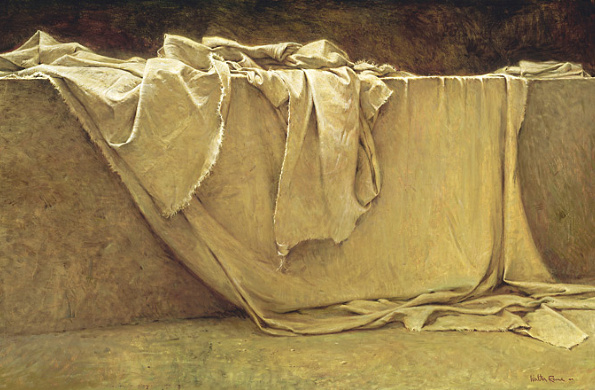
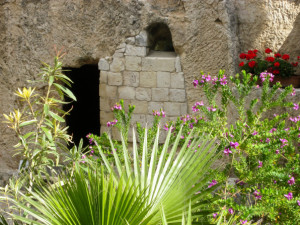

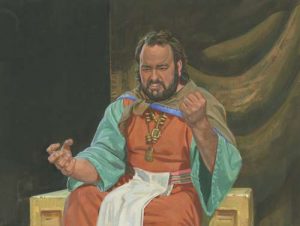
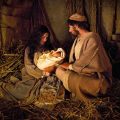


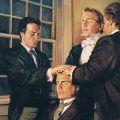

Thank you Jessica. I enjoyed your post.